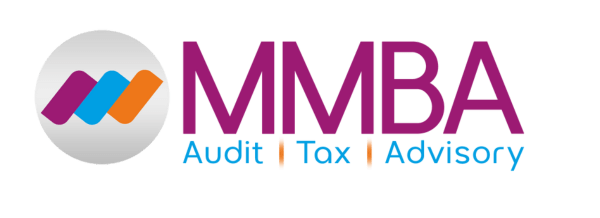
Recent Blog
Arrange a FREE Consultation Call and Let’s Discuss Your Goals!
What is the 40% Tax Bracket?
The 40 tax bracket UK refers to the higher rate income tax band. For the 2024/25 tax year, this rate applies to individuals whose annual income falls between £50,271 and £125,140. However, it’s important to understand that this is a marginal tax rate, meaning only the portion of your income that falls within this range is taxed at 40%, not your entire salary.
The UK’s income tax system uses progressive bracket tax bands:
- Personal allowance: 0% on income up to £12,570
- Basic rate: 20% on income from £12,571 to £50,270
- Higher rate: 40% on income from £50,271 to £125,140
Table of Contents
For people earning a decent salary in the UK, you might have noticed a large jump in your tax bill. In such cases, you may have crossed into the 40% tax bracket. This is often referred to as the 40 tax bracket or higher rate income tax band.
MMBA Accountants can help you calculate your tax and minimise liability. This guide explains what is the 40 tax bracket, how the 40 tax threshold works, and when you start paying 40% tax.
Income Tax and Taxable Income
How much tax will I pay? is one of the most common questions. The amount you pay depends on:
- Your income tax band
- Your total income
Tax reliefs such as pension contributions or charitable donations can lower your taxable income, potentially keeping you below the 40% tax band.
Taxable Income and How to Calculate it?

Taxable income is the amount of your pre-tax income that’s subject to income tax. It includes:
- Earnings from employment
- Self-employment income
- Dividend income
- Savings and rental income
You can claim tax relief on things like pension contributions, charitable donations, and certain business expenses. But these are the expenses which reduce your taxable income.
Who Does the 40% Tax Bracket Apply To?
The 40 tax bracket applies to anyone earning over £50,270 annually. This includes employees, self-employed individuals, and those with additional income from rental properties, dividends, or investments.
For example, if you earn £60,000, your income tax will be calculated as:
- First £12,570: tax-free (personal allowance)
- Next £37,700: taxed at 20% (basic rate)
- Remaining £9,730: taxed at 40% (higher rate)
So, you don’t pay 40 per cent tax on your total income, only on the portion that exceeds £50,270.
Contact MMBA Experts to understand
40% tax bracket on your income!
Call us Today
When the 40 Tax Bracket Starts and Ends?
For the 2024/25 tax year, the higher rate band (the amount of income taxed at 40%) in the UK applies to people who earn between £50,271 and £125,140.
If your overall income is in this range, you’ll only pay 40% income tax on earnings above £50,270. Anything over this figure is charged at lower rates under the UK’s progressive tax system.
Here is how that played out in practice:
- 0% – on earnings below £12,570 (personal allowance)
- 20% – on earnings from £12,571 to £50,270 (basic rate)
- 40% – on earnings from £50,271 to £125,140 (higher rate)
- 45% – on earnings above £125,140 (additional rate)
After you earn £125,140, you enter the 45% additional rate band, and every pound above that amount is subject to a 45% tax charge.
But it is worth keeping in mind that the UK has a marginal tax system, so it applies only to your income within that band, rather than all your earnings.
So, for example, if you’re paid £60,000:
- No tax on the first £12,570
- 20% tax on £37,700 (that is, income between £12,571 and £50,270)
- 40% on £9,730 (£50,271 to £60,000)
This structure would ensure that everyone pays a fair rate proportional to their income, rather than everyone paying a single flat rate.
How Much Can I Earn Before I Pay 40 Tax?
You can earn up to £50,270 before you pay 40 tax in the UK for 2024/25. The money before this level is taxed at the rate of 20 because of a special allowance of £12,570 you get, so you can earn this first.
Here is how your money is taxed before the 20 turns into 40:
- £12,570 Tax-free for you to make for free
- £12,571 £50,270 taxed at 20, the low rate
- Over £50,270 taxed at 40 the high rate
But over £100,000, the special allowance starts to decrease by 1 for every 2 you make over that amount. When it gets to £125,140, you lose all this allowance, which is like having a 60% tax rate for everything you make from £100,000 to £125,140. If you want to avoid the 40 tax rate, there are ways you can do that by law, for example:
- Put money in a pension fund that lowers what you pay in taxes on
- Say thank you to charities, and they will take less tax from your pay
- Use salary sacrifice schemes for stuff like child care or electric cars
- Invest your money in ISA which makes what you make tax-free.
All these ways will help you pay less tax on the money you worked so hard for.
Personal Allowance and Tax Relief
The personal allowance allows you to earn £12,570 tax-free in case if your annual income is under £100,000.
But if you earn more than £100,000, then your allowance is reduced by £1 for every £2 that you earn above this threshold. By the time your income reaches £125,140, at that point your personal allowance is gone.
This creates an effective 60% tax rate on income between £100,000 and £125,140 when you factor in the loss of the personal allowance.
What Other Tax Allowances and Deductions Am I Eligible For?
You can reduce your tax bill by using:
- Marriage allowance (this is applicable if your partner earns less)
- Charitable contributions (Gift Aid Scheme)
- Pension payments (tax-deductible)
- Childcare vouchers
Certain Tax Reliefs Depending on Your Occupation
These tax reliefs help bring down your income payable. However, sometimes they even pull you out of a higher income tax band.
Managing Your Finances in the 40% Tax Bracket
There are many ways in which you can minimise your tax liability If you’ve entered the higher rate tax bracket, don’t panic. Here are tax-efficient ways to reduce your tax liability:
- Pension contributions: These reduce your taxable income and attract tax relief.
- Charitable donations: Claim Gift Aid to reduce your bill.
- Salary sacrifice schemes: Exchange part of your salary for non-cash benefits.
- Make tax-free investments using ISAs, which grow free of tax.
- Dividend income and savings interest may have separate allowances.
What Are Some Tax-Efficient Ways to Pay Myself?
For business owners, it’s possible to structure your income tax efficiently:
- Form a limited company
- Pay yourself a small salary and take the rest as dividends
- Use pension payments and benefits-in-kind
- It’s smart to use a tax calculator to ensure your strategy stays within legal bounds and tax laws.
Capital Gains Tax and Inheritance Tax
Capital gains tax (CGT) is charged on the profit from selling assets like stocks, shares, or a second home. It’s separate from income tax but often applies alongside it.
If you’re in the 40% tax bracket, your CGT rate on residential property could be 28%, while on other assets it’s usually 20%. You get an annual CGT exemption of £3,000 for 2024/25.
How Does Inheritance Tax Relate to the 40% Tax Bracket?
Inheritance tax (IHT) kicks in on estates worth more than £325,000. The rate is 40% on anything above that.
You can reduce IHT by:
- Passing on pension wealth
- Using the residence nil-rate band
- Leave some money to charity
- Like with income tax, it’s smart to seek professional advice for IHT planning.
- By seeking Professional Help
How Can an Accountant Help Me With My Tax Bill?
It is difficult to deal with the higher rate tax band. A qualified accountant can:
- Prepare your tax return
- By claiming all eligible reliefs
- Help reduce your tax liability
- Guide on tax-efficient investments
What Services Do Accountants Offer for the 40% Tax Bracket?
Professional accountants offer:
- Tax planning
- Income structuring
- Dividends and PAYE management
- Capital gains and inheritance planning
If your annual income exceeds £50,000, you’re likely paying more tax than you need to—get advice before your next annual budget review. If your income is high, you might also need offshore tax advice to plan better and pay only what you must.
Staying Up-to-Date With Tax Changes
The UK tax system evolves with every new budget announcement. This includes income tax rates, tax-free allowances, and reliefs often shift.
Recent changes:
- Freeze on personal allowance until 2028
- Reduced CGT exemptions
- Tweaks in dividend tax bands
How Can I Stay Informed About Tax Changes?
To keep ahead of the game:
- Subscribe to HMRC updates
- Follow tax blogs and accountants on social media
- Attend seminars and webinars
- Speak to a financial advisor
Conclusion
If your income falls beyond the basic rate income level through a job, business, or savings and dividend income, then you may enter the 40% tax bracket, where you pay tax only on the amount above the threshold.
Many taxpayers often ask when you start paying 40 tax or when you pay 40 tax, the answer is when your income exceeds £50,270 for the 2024/25 tax year. For this reason, understanding marginal tax rates and personal allowance rules is essential.
By using Individual Savings Accounts (ISAs), making tax-free investments, or increasing pension contributions, you can take advantage of tax-free allowances and effectively reduce how much of your income falls into the 40% tax band.
Frequently Asked Questions
How much can I earn before being taxed at 40%?
You can get a working allowance of up to £ 50,270 before a higher rate of 40% income tax is levied from the year 2024/25. Income less than this sum would be taxed at the lower rates; the 40% tax only applies to anything in excess of £50,270.
What is the 40% tax band in 2024/25?
For the 2024/25 tax year, the 40% tax bracket, known as the higher rate band, is applied to income between £50,271 and £125,140. Income within the range is taxed at 40%, with income below or above that amount subject to different rates.
How to avoid paying 40% tax?
You can minimise the amount of your income that falls into the 40% bracket through a variety of tax-efficient strategies, such as pension contributions, charitable gifts, or salary sacrifice schemes. These would reduce your taxable income enough to keep you below the higher-rate threshold.
Is the 40% tax threshold being changed?
Presently, the 40% income tax threshold stands frozen at £50,270 and is expected to stay at this level until at least 2028. This means inflation or wage growth will not increase the threshold, potentially bringing more earners into the higher rate.
When would the 40% tax band start?
In the UK, the threshold for the 40% tax was £50,271 for the 2024/25 tax year. Above that income, it moves into the higher rate band, with 40 per cent tax charged on earnings above that level.


